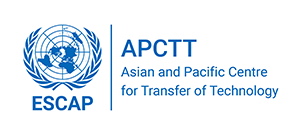New Manufacturing Process for Solar Cells
Silicon is at the core of solar cells and its "shiny" nature means that about 30% of sunlight is reflected back into the sky. To help trap as much photo energy and convert it into as much electricity as possible, the silicon must be either of very high purity or have very few defects. Over the years, this has been accomplished by introducing hydrogen into the manufacturing process. Anti-reflective coating is also used on solar panels to reduce the amount of reflected light and until now, the anti-reflective and hydrogenation for advanced cells has been done with a Chemical Vapor Deposition (CVD) process that is costly for manufacturers. Braggone Limited in the United Kingdom has discovered a method of capturing more light in a solar cell. The result is a new product line that greatly increases the efficiency of solar cells and allows manufacturing facilities to cost-effectively increase their capacity. Bragone's technology uses the same anti-reflective and hydrogenation techniques with a very simple and cost efficient spray coat, bake and repeat process. The scientists at Bragone are successful in effectively tuning the optics of the cell by introducing nanometer thick layers of molecularly tailored materials and this means solar cell makers can have affordable passivation and anti-reflective solutions. The new technology provides the capability to reduce the optical loss in the cell or module in addition to improving the efficiency of electrical conversion within the cell. The consequence for solar power producers is increased Mega Watt (MW) production capacities at a lower cost. The product is used by spray coating it onto the solar cell, or glass, then curing it at an elevated temperature. The innovative new product line is not only a breakthrough for crystalline silicon makers, but can also be used in thin film photovoltaics as well as in solar module manufacturing to further improve their power output.
Sector: Renewable Energy Technologies
Country: India
Area of Application: Photovoltaics, Renewable Energy
Keywords: Silicon, film, solar cell
Advantages: 1. This technology makes alternative energy generation more efficient and more affordable 2. This process results in a new product line that greatly increases the efficiency of solar cells and allows manufacturing facilities to cost-effectively increase their capacity.
Environmental aspects: Cleaner Production
Development Status: Commercial Prototype
Legal Protection: Patent
Technical specifications:
Transfer Terms: Consultancy , Technical Services , Equipment Supply
Target Countries:
Estimated cost (US$):
Upload any relevant document:
Contact Person: APCTT (UNESCAP)
Address: Asian and Pacific Center for Transfer of Technology (APCTT) C-2, Qutab Instituational Area
City: New Delhi
Country: India
Zip/Pin Code: 110016

